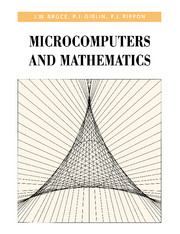2 - Equations
Published online by Cambridge University Press: 05 June 2012
Summary
One of the most important and useful ways in which mathematics can help us to solve problems is by the solution of equations. ‘Let x be the length of the piece of string; then x satisfies the equation x2 – 2x - 3 = 0 and solving the equation gives x = 3.’ We are sure that you have solved many problems using equations; unfortunately all but the simplest equations cannot be solved exactly.
There are two reasons for this. In the first place even for a quadratic equation, unless the solutions are rational numbers (as in the above example), there is a square root such as √2 to be evaluated, and this cannot be done exactly. The decimal expansion does not terminate or recur, so we must be satisfied either with the formal ‘√2’ or with an approximation to so-many decimal places.
The second reason is more profound. Exact formulae analogous to the famous quadratic formula do exist for equations of degrees 3 and 4 – of course these formulae involve cube roots and so on, so are open to the same difficulty as we noted above for quadratics. On the other hand no algebraic formula exists at all for equations of degree 5 or more! In a precise sense, the equation x5 - 6x + 3 = 0 cannot be solved algebraically at all. This is a difficult statement and has an even more difficult proof, in which computers won't help in the least.
- Type
- Chapter
- Information
- Microcomputers and Mathematics , pp. 40 - 83Publisher: Cambridge University PressPrint publication year: 1990

